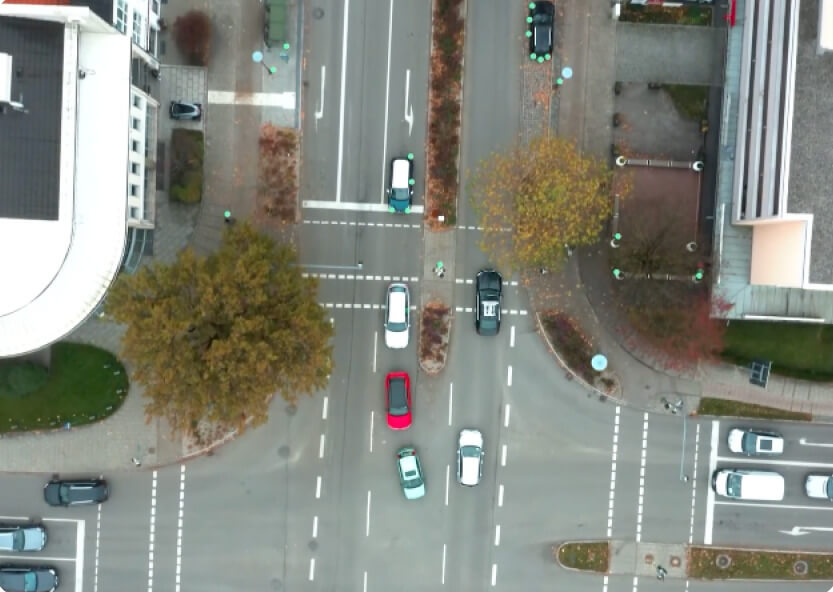
Redefining Driver Safety and Automation
The journey from today’s vehicles with Advanced Driver Assistance Systems (ADAS) and increased levels of autonomy to the longer-term goal of an uncrashable car faces considerable challenges. And while legislation, education, and better road designs all have a role to play, it is technology that will fundamentally change vehicle safety.
Vehicles will require a multitude of sensors and advanced semiconductors to gather and process data about a vehicle’s environment and then make decisions – intelligently and safely – based on that data. This will increase driver trust in the car’s decision-making capability and, ultimately, decrease road accidents and fatalities.
As a pure-play automotive semiconductor company, indie Semiconductor is leading the development of silicon-based hardware and software solutions that meet the rigorous requirements for today’s ADAS and tomorrow’s autonomy applications.
Working with indie, automotive manufacturers can more easily address the integration of a wide variety of sensor modalities and the efficient processing of ever-higher volumes of data while keeping both system power consumption and the overall bill of materials as low as possible.
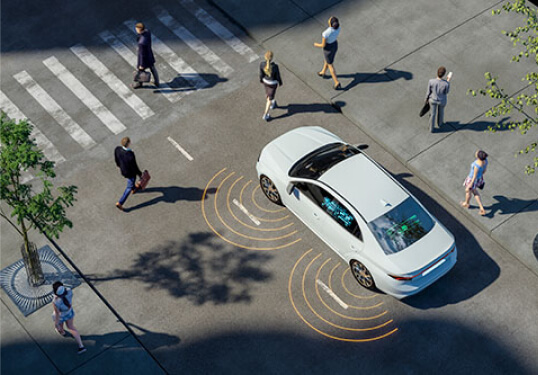
Sensor Modalities
We offer solutions that support distributed sensor processing for the visible spectrum and infrared vision systems, short-range and long-range radar, light detection and ranging (LiDAR) and ultrasonic sensors.
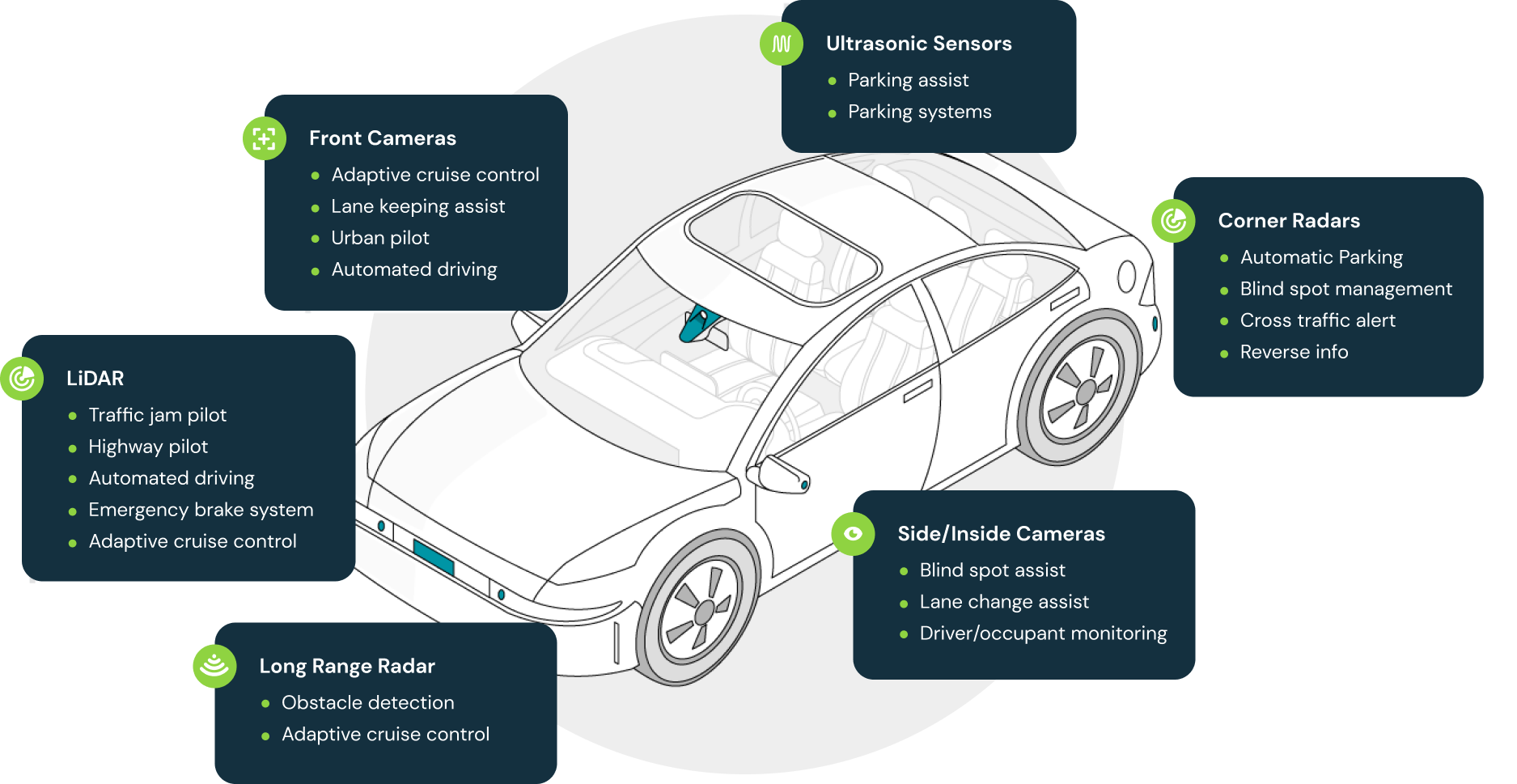
Vision
Offering the ultimate spatial resolution, vision-based sensing has become critical for driver assistance safety systems, enabling functions such as lane detection, collision warning, vehicle localization, and detection of pedestrians, vehicles, road signs and obstacles.
indie is redefining perception-based vision processing by developing high-performance and differentiated semiconductor hardware and open software perception stacks. These solutions are designed to deliver scalable designs spanning internal driver and occupant monitoring systems (DMS, OMS) and high performance external computer vision systems while addressing the cost, power and form factor challenges that OEMs face.
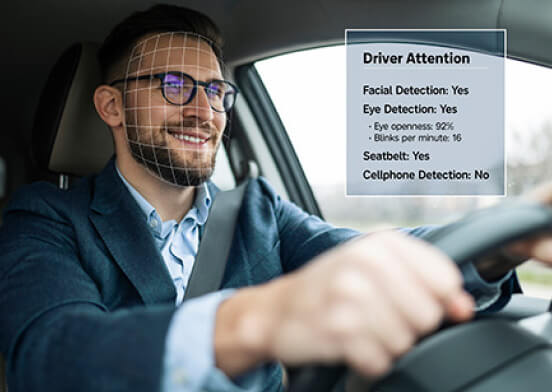
LiDAR
Operating in the near infra-red spectrum, LiDAR provides high-resolution, long-range detection capabilities for driver safety and automation systems. indie addresses this sensor modality by developing highly-integrated FMCW-based coherent LiDAR solutions that help to create accurate, real-time, 3D depictions of the vehicle’s external environment. These solutions deliver high performance at low power and are cost-effective for mass market deployment.
Our LiDAR solutions can be complemented by PureSpectrumTM, a narrow linewidth distributed feedback (DFB) laser technology developed by TeraXion, an indie Semiconductor company. TeraXion is a market-leader in designing and manufacturing integrated, high-end photonic components such as low-noise lasers.
Through a combination of advanced LiDAR semiconductors and software, indie is delivering comprehensive solutions that bring unparalleled performance and cost benefits to the LiDAR ecosystem.
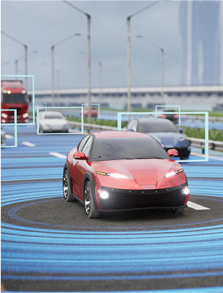
iND83301 – Surya™
LiDAR SoC
LiDAR Whitepaper
A technical debate on the pros and cons of FMCW and coherent LiDAR
With ADAS and autonomous driving applications on the rise, LiDAR has become a hot topic in the sensor world. Is direct-detection (or time-of-flight) or coherent (Frequency Modulated Continuous Wave, for example) photon detection best? Our latest whitepaper discusses the different characteristics of direct and coherent detection in order to educate those interested in liDAR and allow them to make informed system choices.

Radar
An established technology for collision detection in vehicles for over twenty years, radar is an ideal all-round sensor modality supporting a variety functions, including park-assist, automatic braking, adaptive cruise control (ACC), lane-change assist, and blind spot detection.
The increasing number of short-, mid- and long-range radars now being incorporated into vehicles mandates cost-effective solutions – solutions such as indie’s highly integrated, low-power radar hardware and software technologies that support high-precision radar sensing for real-time object detection and distance measurement.
Contact us to learn more about our radar solutions.
Ultrasonic
Resilient to adverse lighting and weather conditions, ultrasonic sensors have become ubiquitous for park-assist and other low-spatial-resolution and short-range sensing use cases.
indie offers a comprehensive portfolio of silicon platforms with highly integrated processing architectures that allow automotive OEMs to simplify design cycles and realize significant BOM and cost advantages when deploying a variety of ultrasonic sensing modalities.
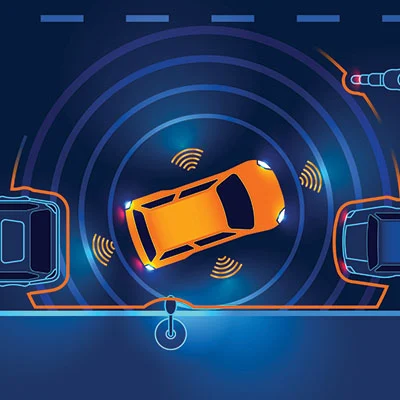
iND83207 – Sonosense™
Ultrasonic Parking-Assist Controller with Transformer Drive
ADAS Products
| iND83301 – Surya™ | LiDAR SoC |
|
| iND83207 – Sonosense™ | Ultrasonic Parking-Assist Controller with Transformer Drive |
|
| GW54x0 | Camera Video Processor |
|
| GW53x0 | Camera Video Processor |
|
| GW52x0 | Camera Video Processor |
|
| GW4300 | Industrial Camera Video Processor |
|
| GW4200 | Automotive Camera Video Processor |
|
| GW4100 | Automotive Analog Camera Video Processor |
|
